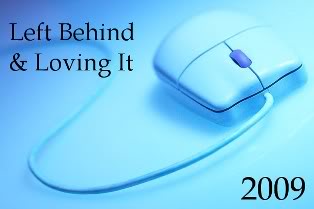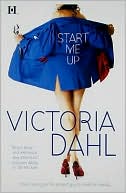(Click the image to visit PBW for more great workshops!)
So you know you want to avoid Plot Interrupted and Tab A/Slot B mechanics, but how do you get “down and dirty” into the emotions of a really deep sex scene?
Here are a few different approaches that may help. Different stories/characters require different techniques, so don’t be afraid to experiment! Some of these begin to overlap and cross over — because each one is trying to get to the CORE of what your character needs — and fears.
Glass Half Empty Approach
Or, everything I learned about characterization, I learned from Paperback Writer. Okay, not quite everything, but I often come back to Lynn’s three basic character questions:
- Who are you?
- What do you want?
- What’s the worst thing I can do to you?
So ask these questions with intimacy in mind. This is a really good technique for pushing boundaries and hitting hot buttons with readers, and definitely how I approached Conn and Rae in Dear Sir, I’m Yours. What’s the worst thing I could do to a college professor? Make him fall in love with a student. Not only would any kind of relationship with a student be forbidden, but they’re also leaning toward a politically incorrect BDSM relationship, a double whammy.
Some key questions that might get the juices flowing: when it comes to intimacy,
- What do you need?
- What’s the worst thing you think you might need?
- What sexual limits are you afraid of or challenged by?
True Transformation
Sometimes you can use sex to show a significant change to a character’s perception, their physical shape (paranormal), or their world view. In Beautiful Death, Isabella is physically changed by a viral mutation and must depend on Hades for survival. In my friend, Jenna Reynolds‘ novella The Emissary, Shina is able to use sex to change the Kjartan alien’s perception of not just her but her entire world.
Questions to ask your character: how can sex/intimacy change
- your opinion of your partner?
- your perception of yourself?
- how you view the world or society in general?
This kind of approach is great when you have two polar opposites, like different cultures or enemies.
Romantic Approach
For a romance, two questions I always ask myself are:
- Why is the hero the worst possible match for this heroine?
- Why is he the best possible match for her?
Now change that up and think of it from an intimacy/sexual angle.
- How are they incompatible sexually?
- How are they perfectly matched sexually?
There are all sorts of ways to build opposing needs through intimacy. Maybe one character needs/wants kink and the other fears it — or perhaps there is a particular act that one party avoids or fears. Maybe one is very conservative and the other character has been promiscuous in the past.
Even better, deepen this fear to something buried in the characters’ past (see the Haunted Past). Our “core beliefs” about who we are were formed when we were children. Deep down, we all fear that we’re unlovable for some dread reason.
Raise the Stakes
Sex can be dangerous for many reasons. Ask your character:
- What can I lose? What’s it going to cost?
- What can I gain?
- What am I willing to sacrifice in order to get closer to this person?
The Haunted Past
While we don’t need info dumps of backstory, it’s important to have a richly defined past for your characters. What are the key events that happened outside the story that shaped who your characters are today? Specifically, think about their sexual encounters.
- What haunts them today?
- What emotional scars do they still carry?
Hero’s Journey
My friend Jenna already did a fantastic post on writing sex scenes that matter using the hero’s journey. We both highly recommend the Emotional Toolbox — I use it for every single story. When all else fails and I can’t get the pieces of character and plot to come together, I can always turn back to my simple drawing of the mask, want, and need to come up with the answer. Some questions that might help you identify the character’s mask — and ultimately rip it away:
- Deep down, what fear keeps you from being with this person?
- How can intimacy force me to face this fear?
- How can I use my fears to push this person away?
- How can sex with this person cause a setback to my goals (whether external or internal)?
Example
Referring back to Jenna’s story, The Emissary has some lovely flavors of the Japanese geisha mixed into a futuristic science fiction world. Shina is in training to become a courtesan, but she never expects an alien to pay her virgin price. When she meets the Emissary, he deigns to even give his name. He’s cold and harsh, but Shina has been trained to be gracious and willing to provide any pleasure her partner requests.
The Emissary ridicules her society and her. She is too soft. She would never survive on his planet. She is small, like a little willow, and that’s what he begins to call her as they begin the “pillowing.” However, Shina tells him a story of how the mighty oak tree fared when it refused to bend before the vicious wind. The willow swayed in the wind and survived, while the oak suffered defeat.
Indeed, this story is played out through their sex scenes. She is the willow, bending to his demands. No matter how fiercely he blows, she gives, gladly, and finds pleasure in his touch. Her softness and the delicious way she sways in his wind is exactly what he finds so intriguing, and in the end, the might oak falls.
Through sex, Shina changes the Emissary’s complete world view, forcing him to admit that she is the emissary. She has brought their cultures together.
Discussion: Can you suggest any other questions to access our characters’ deepest sexual fears and desires?
Share them in comments (or simply throw your name in the hat) to be entered to win a $30 gift certificate to any online bookstore retailer and winner’s choice of any book from my backlist.
As Lynn always says, anyone on the planet can enter, even if you’ve won something from me before. I’ll accept comment entries through midnight CST Sunday night, July 19th, on this post, or you can e-mail me ONCE (joely AT joelysueburkhart DOT com). One of the monsters (my kids) will draw names on Monday and I’ll post all winners then.



